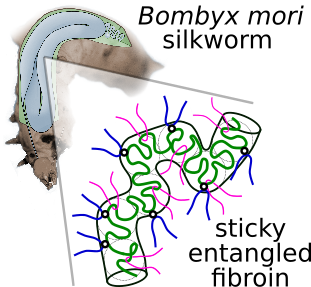Silk Protein Solution: A Natural Example of Sticky Reptation
Published in Macromolecules, 2020
Cite: C. Schaefer, P.R. Laity, C. Holland, T.C.B. McLeish. "Silk Protein Solution: A Natural Example of Sticky Reptation." Macromolecules. 53, 2669–2676 (2020) https://pubs.acs.org/doi/abs/10.1021/acs.macromol.9b02630
Silk produced by spiders and silkworms is tougher than steel, produced at less than a tenth of the energy consumption required for man-made fibres, and is biocompatible and biodegrable - silk is excellently suitable for medical applications and green materials. In order to improve synthetic materials, we (myself and Prof. Tom McLeish in the Physics of Life group of York) observe and learn from the animals in collaboration with Dr. Pete Laity and Dr. Chris Holland of the Natural Materials Group at the University of Sheffield. In this publication in Macromolecules, we revealed that the silk protein not only looks like a polymer (which has already been known for a long time) but also behaves as a polymer. Specifically, we found it behaves as a sticky polymer. Sythethic polymers used for the manufacturing of fibres are typically not sticky; our work suggests that stickiness should become part of the strategy to design a novel class of bio-inspired fibres.
Click here for our follow-up research on this work.

